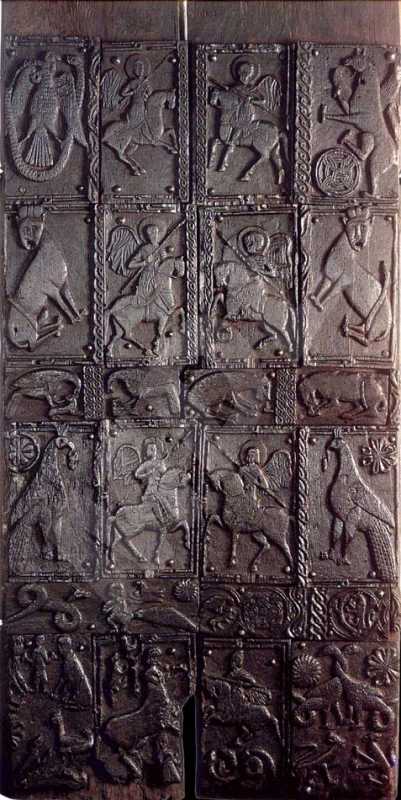Church doors
Type:
Plastic iconographical object:
Church doors
Period:
From
the beginning of the
13 century
to
the end of the
13 century
School: Unknown
Dimmensions (cm):
175
/ 88
Location
Country: Bulgaria
Province: Sofia
Town: Sofia
Museum: National History Museum
Source
Country: Bulgaria
Other source: Others
Object identification notes
The discussed monument is a textbook example of Orthodox Balkan art.
The door of the Ohrid church has extremely nice wood-carving and can compare mostly to the chest from Teracina, a work of Romanesque Period Western art with characteristic teratological style and decoration of the plates which were made for their own sake and mounted additionally to the door frame. The relief is reminiscent of the Coptic Antiquity and the substance recalls the metal-working of bronze doors from Italy and medieval Europe and even the famous Suzdal relief. Centaurs, lions and griffins exhibit the characteristics of Romanesque art and teratological style and the manner of the composition leads to the culture of Syria and Asia Minor.
Description
When closed the door brings in one four high horizontal friezes with four figures each and placed into rectangular medallions. The profiled frames have been additionally mounted. Two other smaller tiers with relief lie between the second and third and between the third and fourth friezes. They feature an eagle, birds, beasts that clutch prey between their jaws, an echidna and small human figures. The big elongated plates contain four rows of horsemen two by two. From top to bottom these are: St George and St Demetrius; St Theodore Tyron and St Theodore Stratilates; Mercury and Procopius. The bottom section under them is given to a centaur and a horseman with a spear who tramples upon a dragon. All horses stand on their hind legs. A tree next to the centaur obeys all the rules of right perspective; a female figure stands below. Another of the big rectangular plates features a flying bird with a twig in its bill, a sitting monkey, a dog barking at a beast lying under a tree, a jumping marten and asps with intertwining necks.
Iconographical technique: Carving
Base material: Wood


